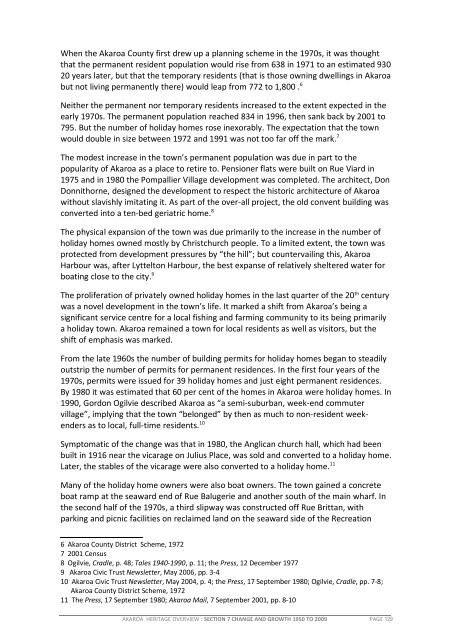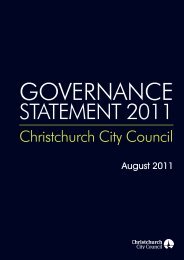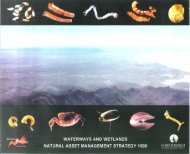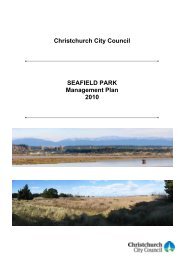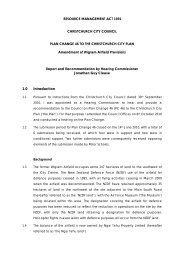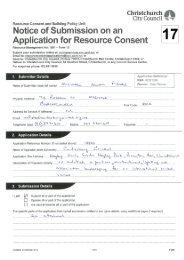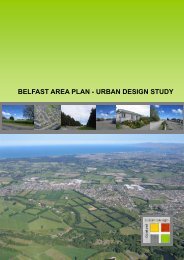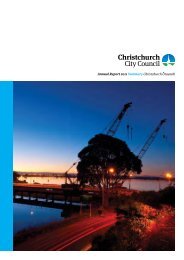Akaroa Historical Overview - Christchurch City Council
Akaroa Historical Overview - Christchurch City Council
Akaroa Historical Overview - Christchurch City Council
You also want an ePaper? Increase the reach of your titles
YUMPU automatically turns print PDFs into web optimized ePapers that Google loves.
When the <strong>Akaroa</strong> County first drew up a planning scheme in the 1970s, it was thought<br />
that the permanent resident population would rise from 638 in 1971 to an estimated 930<br />
20 years later, but that the temporary residents (that is those owning dwellings in <strong>Akaroa</strong><br />
but not living permanently there) would leap from 772 to 1,800 . 6<br />
Neither the permanent nor temporary residents increased to the extent expected in the<br />
early 1970s. The permanent population reached 834 in 1996, then sank back by 2001 to<br />
795. But the number of holiday homes rose inexorably. The expectation that the town<br />
would double in size between 1972 and 1991 was not too far off the mark. 7<br />
The modest increase in the town’s permanent population was due in part to the<br />
popularity of <strong>Akaroa</strong> as a place to retire to. Pensioner flats were built on Rue Viard in<br />
1975 and in 1980 the Pompallier Village development was completed. The architect, Don<br />
Donnithorne, designed the development to respect the historic architecture of <strong>Akaroa</strong><br />
without slavishly imitating it. As part of the over-all project, the old convent building was<br />
converted into a ten-bed geriatric home. 8<br />
The physical expansion of the town was due primarily to the increase in the number of<br />
holiday homes owned mostly by <strong>Christchurch</strong> people. To a limited extent, the town was<br />
protected from development pressures by “the hill”; but countervailing this, <strong>Akaroa</strong><br />
Harbour was, after Lyttelton Harbour, the best expanse of relatively sheltered water for<br />
boating close to the city. 9<br />
The proliferation of privately owned holiday homes in the last quarter of the 20 th century<br />
was a novel development in the town’s life. It marked a shift from <strong>Akaroa</strong>’s being a<br />
significant service centre for a local fishing and farming community to its being primarily<br />
a holiday town. <strong>Akaroa</strong> remained a town for local residents as well as visitors, but the<br />
shift of emphasis was marked.<br />
From the late 1960s the number of building permits for holiday homes began to steadily<br />
outstrip the number of permits for permanent residences. In the first four years of the<br />
1970s, permits were issued for 39 holiday homes and just eight permanent residences.<br />
By 1980 it was estimated that 60 per cent of the homes in <strong>Akaroa</strong> were holiday homes. In<br />
1990, Gordon Ogilvie described <strong>Akaroa</strong> as “a semi-suburban, week-end commuter<br />
village”, implying that the town “belonged” by then as much to non-resident weekenders<br />
as to local, full-time residents. 10<br />
Symptomatic of the change was that in 1980, the Anglican church hall, which had been<br />
built in 1916 near the vicarage on Julius Place, was sold and converted to a holiday home.<br />
Later, the stables of the vicarage were also converted to a holiday home. 11<br />
Many of the holiday home owners were also boat owners. The town gained a concrete<br />
boat ramp at the seaward end of Rue Balugerie and another south of the main wharf. In<br />
the second half of the 1970s, a third slipway was constructed off Rue Brittan, with<br />
parking and picnic facilities on reclaimed land on the seaward side of the Recreation<br />
6 <strong>Akaroa</strong> County District Scheme, 1972<br />
7 2001 Census<br />
8 Ogilvie, Cradle, p. 48; Tales 1940-1990, p. 11; the Press, 12 December 1977<br />
9 <strong>Akaroa</strong> Civic Trust Newsletter, May 2006, pp. 3-4<br />
10 <strong>Akaroa</strong> Civic Trust Newsletter, May 2004, p. 4; the Press, 17 September 1980; Ogilvie, Cradle, pp. 7-8;<br />
<strong>Akaroa</strong> County District Scheme, 1972<br />
11 The Press, 17 September 1980; <strong>Akaroa</strong> Mail, 7 September 2001, pp. 8-10<br />
AKAROA HERITAGE OVERVIEW : SECTION 7 CHANGE AND GROWTH 1950 TO 2009 PAGE 129


